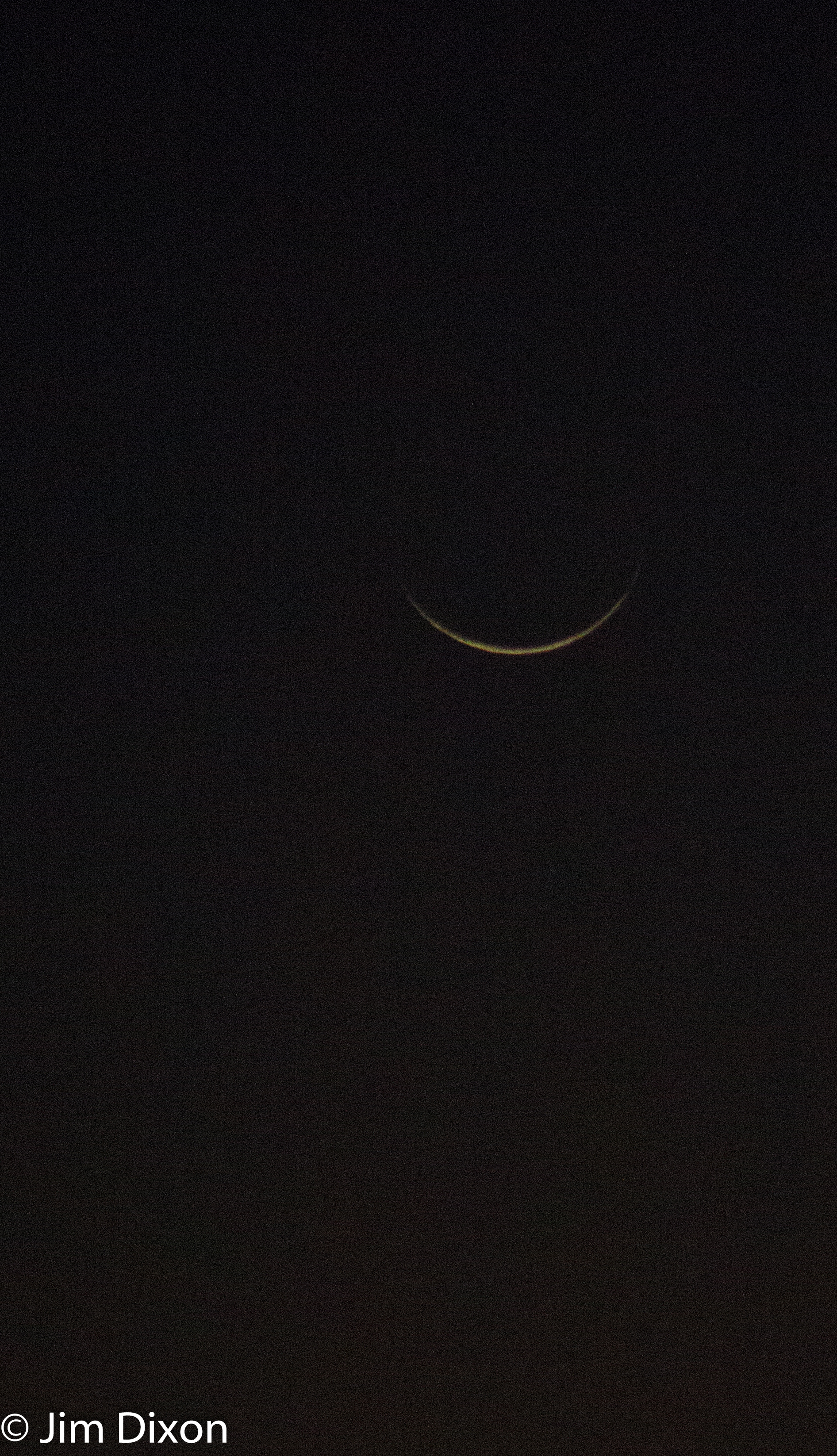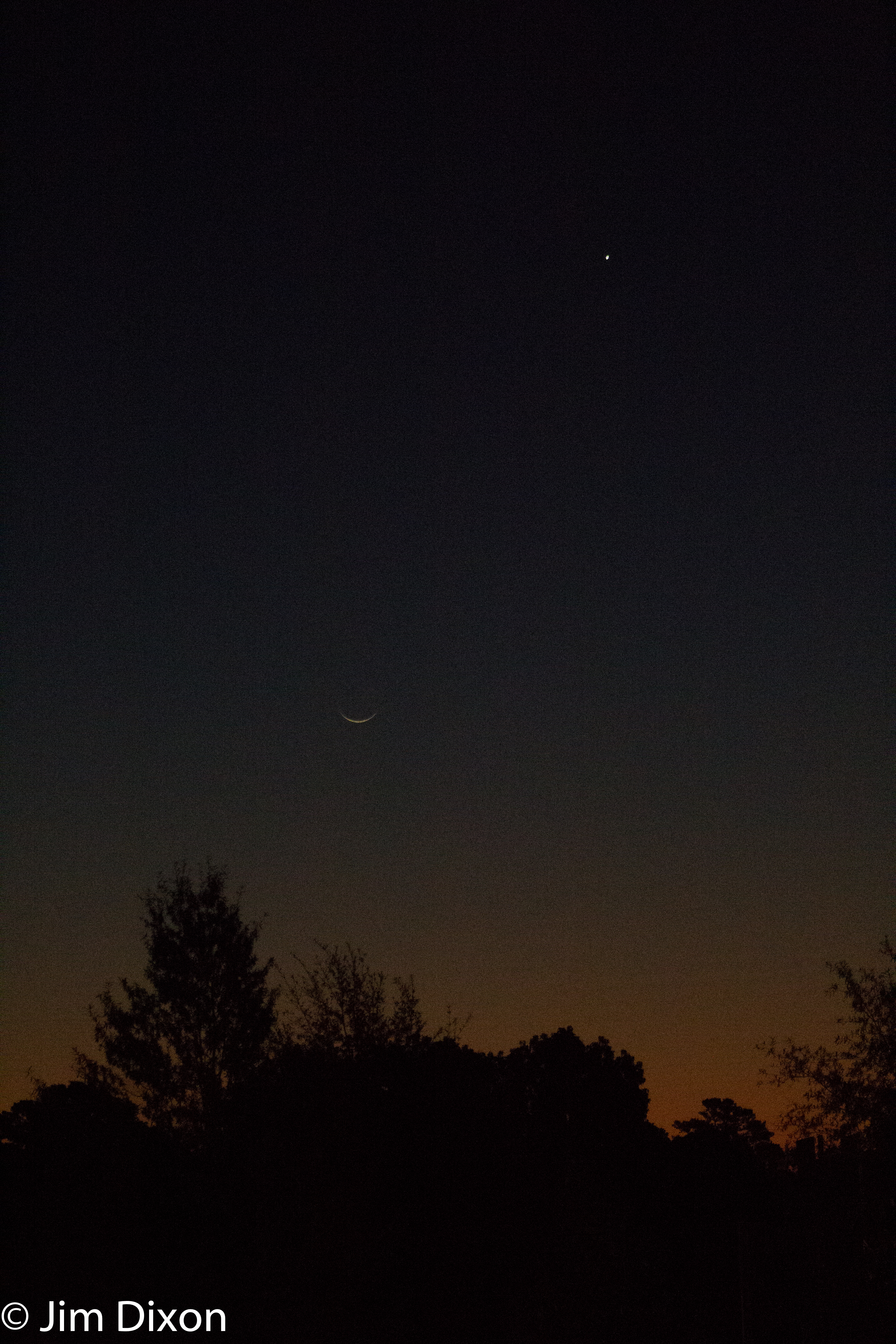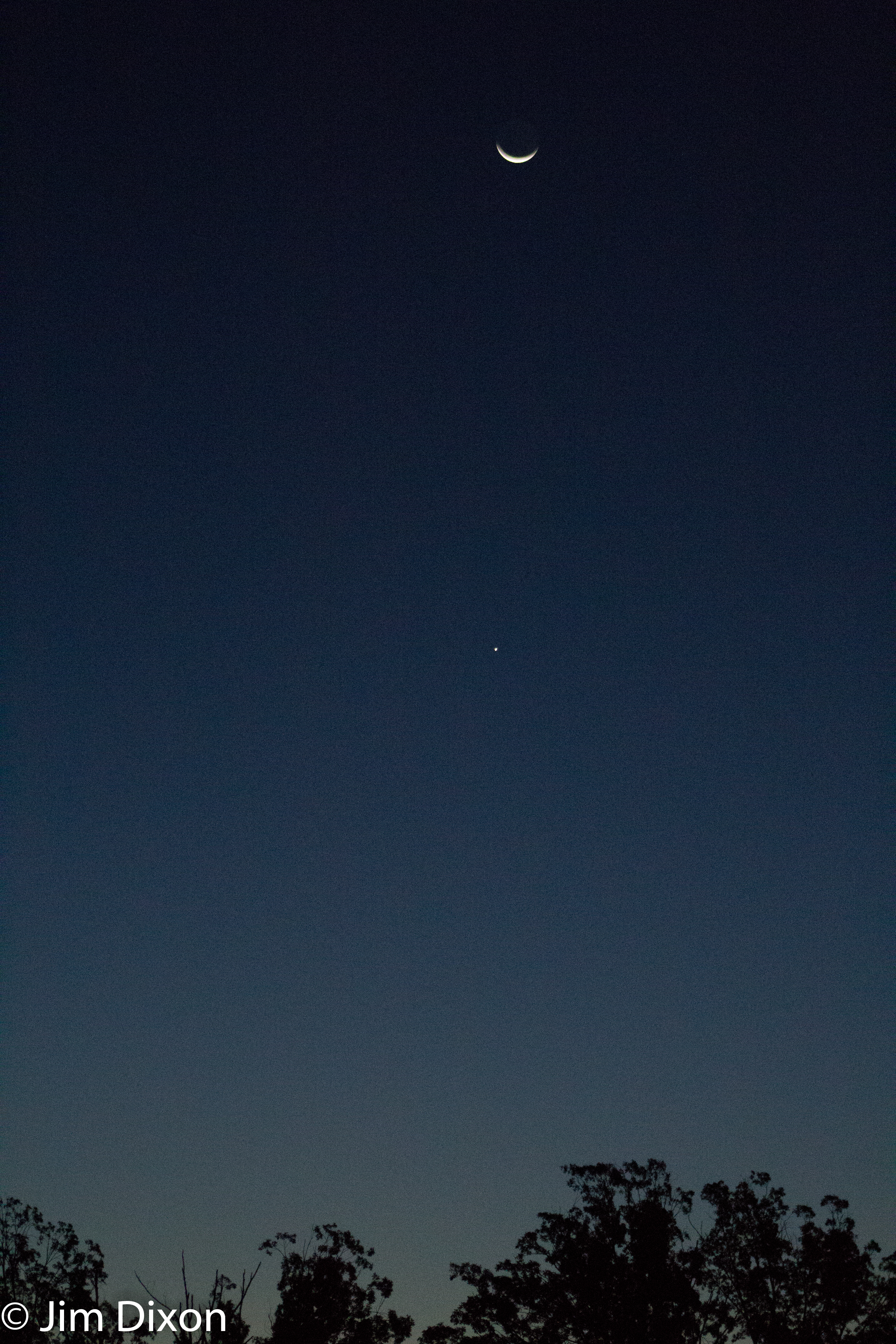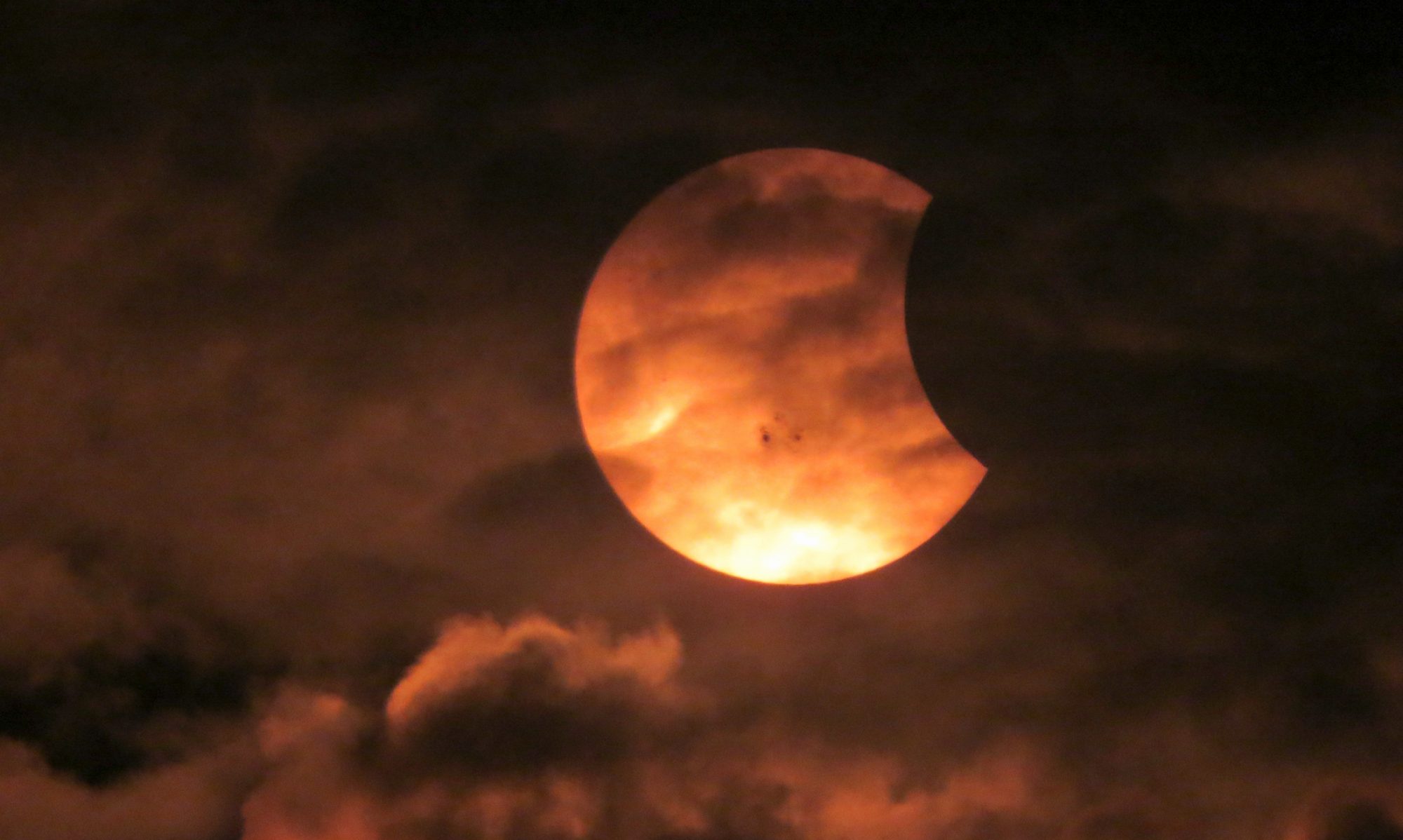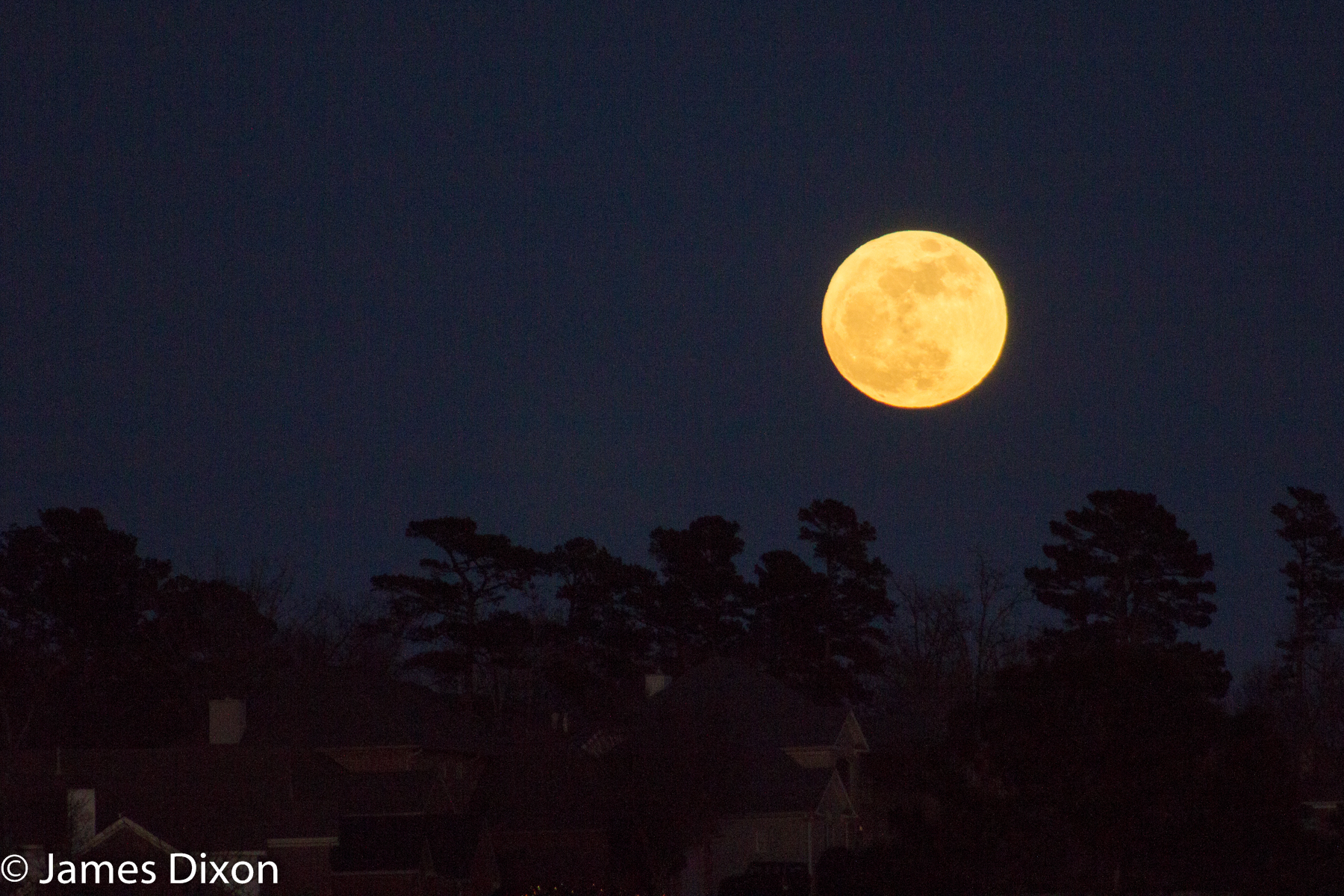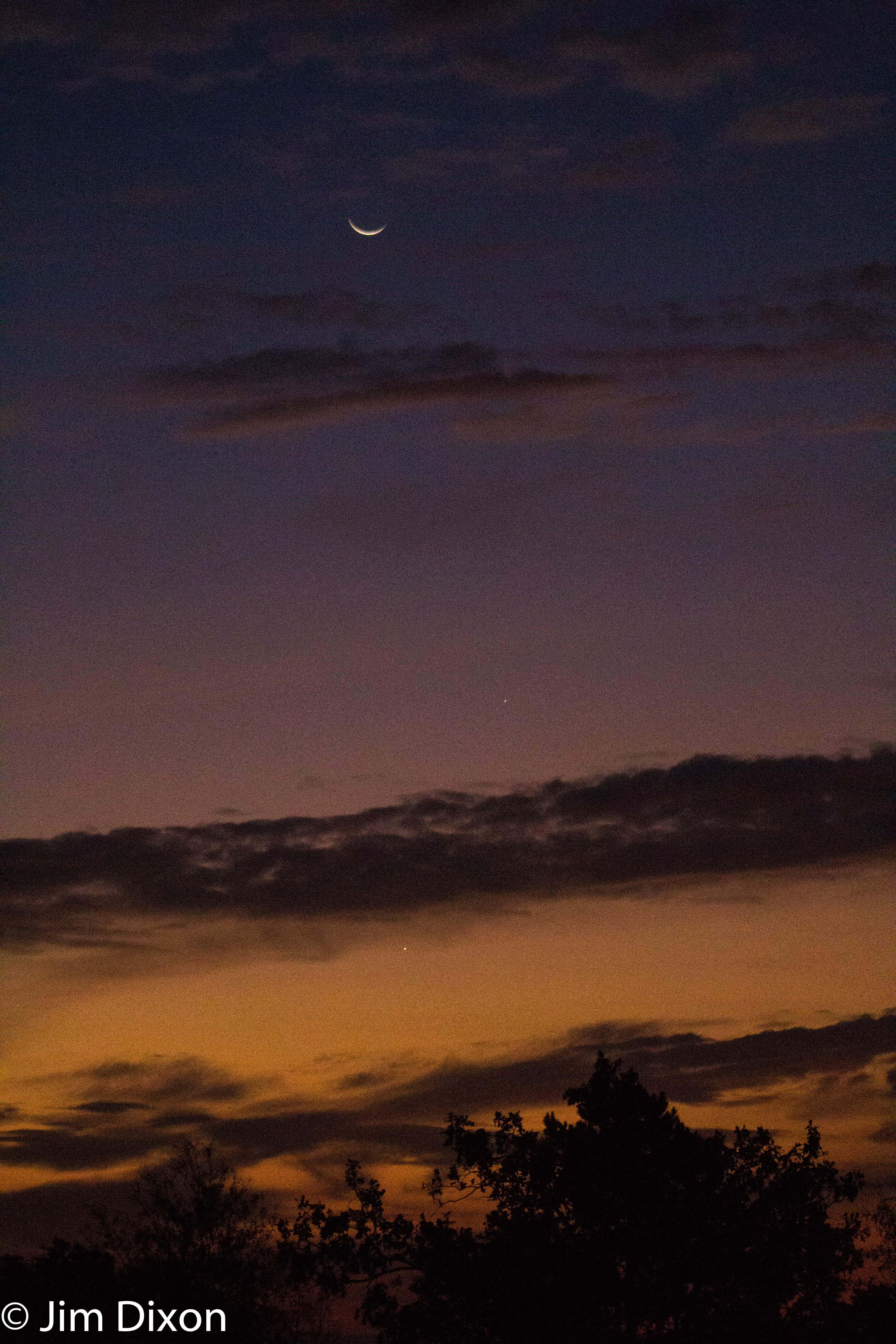I asked the family if they wanted to go shoot the rising Moon in the 20 degree weather with me. They all looked back at me as if I had a chicken on my head. They may have had a point as my fingers were in a lot of pain by the time I got done. Here is a short video and a final still of the event.
Moon, Jupiter and Venus 11/16/2017
From the top down, we have the Moon, Jupiter (near the middle), and Venus in the clouds this morning. Taken a little after 6 AM. I might try again tomorrow if it is clear.
The Moon and Venus
I’m just wrapping up the Astronomical League’s Lunar Observing Program with two observations to see the Moon within 72 and the 48 hours of new. Photos are not required but why not?
Here in descending order are the Moon and Venus and the Moon from Wednesday the 18th when the Moon was 32 hours from new and then the same from Tuesday when it was 52 hours from new. See how thin the Moon is and if you double click either picture with Venus and you can see it’s gibbous phase.